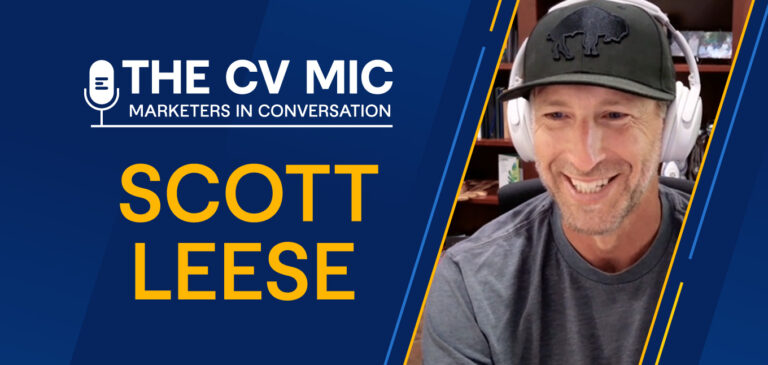If you’ve ever stared at an empty content calendar, trying to force out yet another “fresh” blog idea, you’re not alone. We’ve all been there: Caught in a cycle of uninspired brainstorming sessions or last-minute fire drills that lead to rushed execution. The result? Content that fills space but doesn’t actually move the needle.
The real issue isn’t creativity. Its structure.
At ClearVoice, we believe content ideation should be more than a messy whiteboard session or a string of ideas dropped in Slack. It should be a repeatable, strategic process that aligns with your brand goals, speaks directly to your audience, and fuels every content effort — from one-off posts to full-scale campaigns.
That’s why we created the Content Ideation Playbook: a practical guide to help you generate, refine, and implement content ideas that actually work. Whether you’re launching a new editorial initiative or just trying to revitalize your current calendar, this playbook offers a flexible framework to help you ideate with clarity and consistency.
Let’s break down what’s inside and why it matters.
Why Most Content Ideation Efforts Fall Flat
Here’s a scenario that might feel familiar: Your team finally carves out time to brainstorm. There’s energy in the room, maybe even snacks. Ideas fly; some good, some vague, some totally off-brand. You leave the meeting with a scribbled list of topics, a few “maybes,” and no real path forward.
Fast forward two weeks. No one’s touched the list. Deadlines loom. And now you’re scrambling to write something — anything — because the blog needs to be updated and marketing needs a nurture email.
The problem here isn’t a lack of ideas. It’s a lack of process.
Without a clear structure guiding ideation, you end up spinning your wheels. Content becomes reactive instead of proactive. And even the best ideas fall through the cracks.
Great ideation isn’t about shouting ideas into a vacuum; it’s about building a system that consistently generates content worth creating.
Step 1: Zoom Out Before You Dive In
Before you brainstorm a single topic, pause. This step — discovery (or rediscovery) — isn’t just nice to have. It’s the foundation that gives your ideas direction.
The Playbook’s Ideation Kickoff Worksheet walks you through key discovery questions, like:
- What current content is performing well, and why?
- Who is our target audience, and what are their biggest challenges right now?
- What product or service do we want to highlight in upcoming content?
- Where will this content live, and what formats make the most sense?
- What are our primary content goals (e.g., traffic, leads, awareness)?
- What gaps exist in our competitors’ content that we can fill?
Answering these isn’t busywork. It’s what helps you tie ideation to business outcomes and make sure the content you create serves a real purpose.
Just as important? Defining your content pillars and themes.
Think of content pillars as your brand’s big buckets, the core topics you want to be known for. These often align with your services, audience interests, or long-term positioning. Under each pillar, you’ll likely have supporting themes that help you explore the topic from different angles.
For example, a marketing agency might have:
- Pillar: Content Strategy
- Themes: Editorial planning, ideation frameworks, distribution strategy
- Pillar: Performance Marketing
- Themes: Analytics dashboards, conversion copywriting, A/B testing
- Themes: Analytics dashboards, conversion copywriting, A/B testing
These pillars and themes act like filters for your brainstorm. They ensure that no matter how creative your ideas become, they still align with what your brand stands for and what your audience actually needs.
👉 You can grab the Ideation Kickoff worksheet in the free Playbook here.
Step 2: Generate Ideas That Are Creative and Executable
Once discovery is done, you’re ready to start creating ideas. But to avoid falling into the trap of generic or disconnected concepts, you need a structure, and the Playbook gives you two.
Manual Brainstorming
If you like a hands-on approach, manual brainstorming is for you. The goal here is to generate thoughtful, varied content ideas that can be shaped into campaigns, standalone assets, or multi-format executions.
Start with a timer. Give yourself 30 minutes to ideate within one content pillar. Try these formats to mix things up:
- Listicles: “7 Ways to Improve Your Email CTAs”
- How-To Guides: “How to Streamline Compliance Content for Finance Teams”
- Explainers/FAQs: “What Is GA4 and How Does It Impact Marketers?”
- Hot Takes/POVs: “Why Most B2B Blogs Sound Exactly the Same (And How to Fix Yours)”
- Versus Pieces: “Content Calendar vs. Editorial Strategy: What’s the Difference?”
Then, for each idea, jot down:
- A working title
- 1-2 sentence summary
- Target audience
- Content format (e.g., blog, video, email)
- Funnel stage (e.g., TOFU, MOFU, BOFU)
- CTA
- Suggested channel
- 2-3 links or sources to support the concept
Want to take it further? Pick one idea and adapt it across multiple formats — like a blog → carousel post, → webinar talking point.
AI-Assisted Ideation
Need a faster way to scale your list? The Playbook includes a plug-and-play prompt for AI tools like ChatGPT or Claude.
Here’s the full prompt:
Act as a senior content strategist. Based on the information provided, generate [number] unique and strategic content ideas across various formats (e.g., blog posts, videos, social media, email series, white papers, webinars, etc.). Ensure the ideas align with the brand’s goals, target audience, and content pillars. Include a mix of funnel stages (TOFU, MOFU, BOFU) and suggest suitable channels for each idea.
Each idea should include:
-
-
- A working title
- 1-2 sentence summary
- Suggested content type (e.g., video, blog, social post)
- Target funnel stage (e.g., TOFU, MOFU, BOFU)
- Recommended CTA
- 2-3 supporting resources or examples
-
Project Summary: [insert]
Content Goals: [insert]
Content Pillars/Themes: [insert]
Target Audience: [insert]
Industry/Vertical: [insert]
Preferred Formats or Channels: [insert]
The result? A long list of brief-ready content ideas you can build out quickly, without sacrificing relevance or quality.
Step 3: Document, Organize, and Prioritize
Now that you’ve got a stack of solid ideas, it’s time to get organized. Seriously, this is the step that separates great teams from chaotic ones.
In Step 3, the Playbook helps you move your brainstorm into a centralized location. Think Google Sheets, Notion, Airtable — whatever works for your team. The Playbook includes a ready-to-use Google Sheet template that tracks:
- Working title
- Description
- Content type
- Funnel stage
- Target persona
- Channel
- CTA
- Owner (Who on your team is responsible for this topic?)
- Status (e.g., in queue, approved, published)
This isn’t just about tidiness, it’s about visibility. Everyone on your team should know where to find ideas, what’s in development, and which pieces tie to current campaigns. It also makes cross-functional collaboration easier, especially when you’re balancing SEO, product marketing, and sales enablement goals.
And when planning content calendars, you’re not starting from scratch. You’ve got a backlog of vetted, ready-to-go ideas.
👉 You can grab the Ideation Storage Template in the free Playbook here.
Step 4: Operationalize for Long-Term Success
Smart ideation doesn’t stop at the idea. The real challenge is turning good ideas into great content consistently.
That’s why Step 4 is all about operationalizing your ideation workflow.
Start by creating a shared hub: a central place where all ideation templates, resources, briefs, and approved ideas live. Make it accessible to everyone on your team. If people don’t know where to find things, they won’t use them — plain and simple.
Next, build ideation into your rhythm. Don’t just wait for campaign kickoffs or quarterly planning meetings. Schedule regular brainstorms (even short ones), assign ownership for idea refinement, and align your timing with upcoming content sprints.
Establish a simple feedback loop. Before anything moves to production, make sure ideas are reviewed and approved. After content goes live, do a retro: What worked? What didn’t? What should we try next time?
And don’t forget about team training. Run an internal workshop using the Playbook. Show new hires how to use your ideation tools. Share ideation wins and examples of successful content. The more comfortable your team feels using your system, the stronger and faster your content engine becomes.
The Bottom Line: Great Content Starts with Great Ideas
Whether you’re ideating solo, leading a team brainstorm, or revamping your entire editorial strategy, this Playbook helps you build better ideas — the kind that ladder up to strategy, serve your audience, and translate into powerful content across channels.
Because when you get this part right? Everything else gets easier: briefs are faster, execution is smoother, and results are stronger.
👉 Download the Playbook now, and if you’re ready to take your ideation to the next level, let’s talk.
At ClearVoice, we’ll help you clarify your voice, sharpen your content, and bring your brand to life across every touchpoint. Connect with a Content Specialist and see how you can upgrade your content marketing strategies.
Let’s make content ideation the part of your workflow you actually look forward to.









